Monday, August 24, 2009, 06:23 PM - Servicing
Here is a partial repair guide for Jupiter 9 lenses. Unfortunately I was not able to fully dismantle it, as several screws broke when trying to use them.This lens optical schema is made of 7 elements in 3 groups. The diaphragm is located between the two triplets.

The front element can be accessed by unscrewing the front ring using a spanner:

The rear group can be unscrewed in a similar way, but it can not be directly removed from the lens barrel. However, if you set the lens to it minimum focus distance, you will be able to move the rear group inside the barrel. If you are very careful, that might be enough to allow you to clean it or the aperture blades.
Remove the rear ring by removing the side screw and unscrewing the ring:
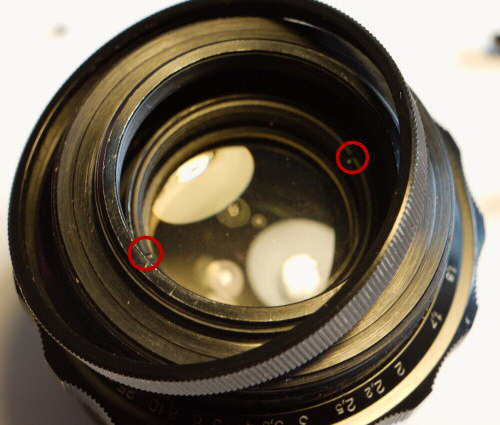
You can now remove the focus ring:
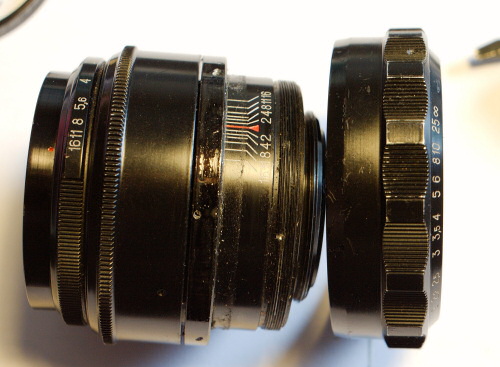
That should be enough to allow you to access the focusing helicoid, by setting the lens to its minimal focus distance.
Now, remove the diaphragm ring:

From there, you can access the clicking mechanism of the preset aperture. If your aperture preset ring doesn't click properly, you might need to clean this small cylinder, or re-shape the metal part that sits on top of it.
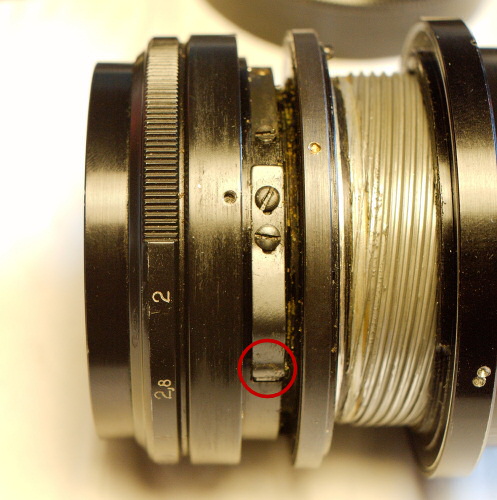
You can now remove the aperture selection ring:
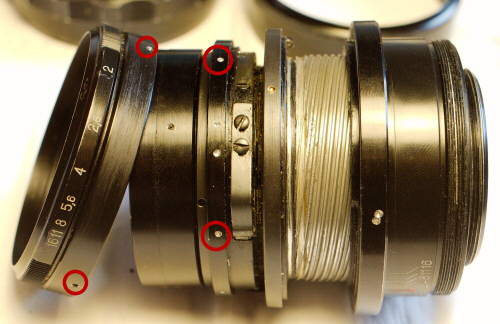
This allows you to remove the front part of the lens, which includes the front element and the front triplet. The front triplet can be removed by unscrewing this rear ring (using a spanner):

| 0 trackbacks
| permalink
| related link
Wednesday, July 29, 2009, 12:05 PM - Servicing
This is an 50/1.8 M42 planar lens, designed by Carl Zeiss (Oberkochen, not Jena) and built by Rollei in Singapore.This one is branded as Ifbagon, but it is also available under the "Rollei - Design by Carl Zeiss" and "Voigtländer Color-Ultron" labels.

As its aperture is only designed to work in automatic stop down mode, it needs to be converted into manual mode to be usable on non-m42 cameras with an adapter.
First, set your lens to infinity and remove the four rear screws...

...and remove the mount.

Remove the outer black ring, and you can now remove those three screws:

One of those screw is longer than the other ones, as it acts as a stopper for the focusing mechanism. It is the one which goes on the bottom.

Here you can see the aperture transmission mechanism, which you should now remove.


The small cam is slightly asymmetric, so you can only put it back in one way.
Remove yet another ring in order to see the aperture mechanism.
Beware not to loose the small bearing and the spring which should be pressed on it.


The vertical cam of the diaphragm goes within the "fork" on the part we just removed. You can only put it back if the lens is focused at infinity.

You can now lock the aperture into manual position. I used a piece of insulator from an electric wire.

You should now be able to put everything back. If for any reason you goofed up by unscrewing the focusing helicoid, you can easily adjust infinity from the front of the lens.
Unscrew the front black ring, and you can access the three screws that will allow you to properly restore infinity setting.

Sunday, May 31, 2009, 11:10 PM - Lenses
I had the opportunity to try a 135mm f/3.5 Super Takumar lens.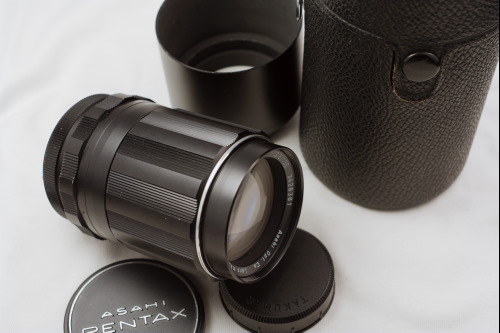
I have been surprised by the smooth handling of its focus ring, which is really pleasing to use. Even if it is only a Super Takumar and not an SMC Takumar, I did not had any flare issue (but I was using it with its dedicated lens hood).
Wide open, it is sightly soft on a 14Mp APS-C camera, but once stopped down by one step it is as sharp as what is allowed by this sensor.



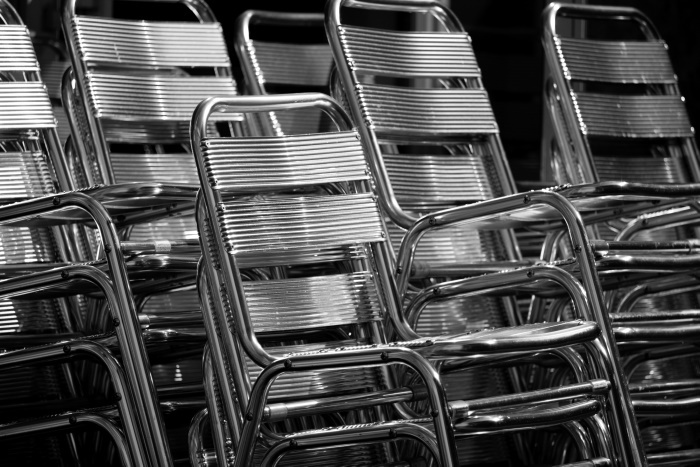
Tuesday, April 28, 2009, 08:30 PM - Lenses
This is a 500mm F/8 russian mirror lens (m42 mount) of Maksutov (not Matsukov, as I first spelled it) design, manufactured by LZOS.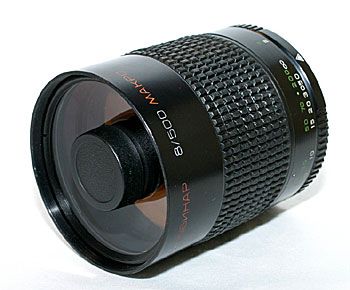
Significantly more compact than a traditional 500mm lens, it is reasonably hand-holdable if there is enough light. While it is f/8, its actual transmission factor is about T/10, as the central mirror obstructs some of the light.
With such a focal length, you can shoot objects which are significantly far away...

... or isolate "details":
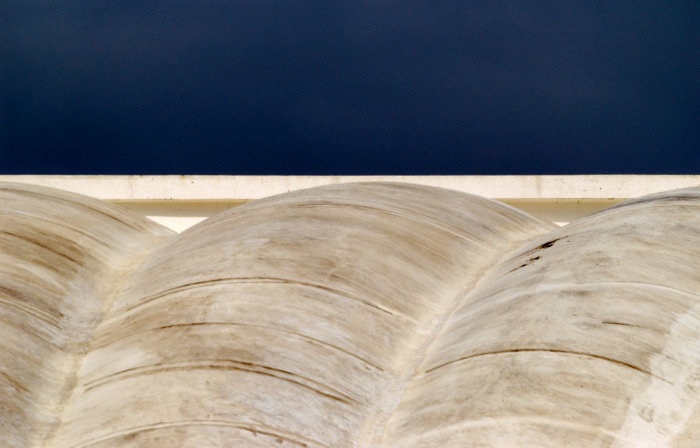
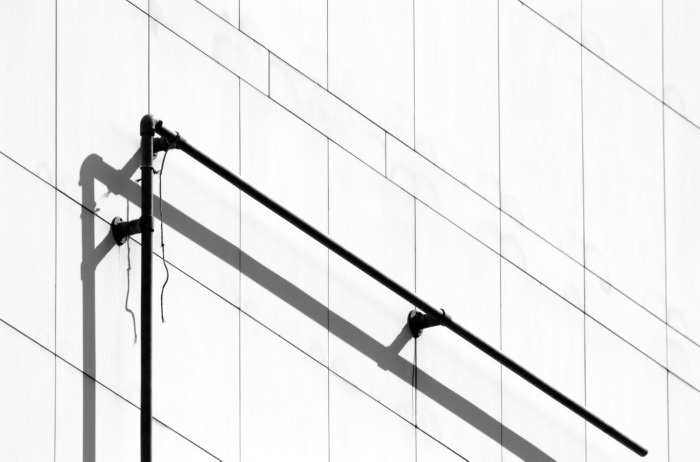
While it is advertised to be a macro lens, in reality it allows close-ups, but not more:

(this is an high-key shot, so if your screen is not properly calibrated, you might not see anything on this picture)
With this long focal length, you can shoot architecture with nearly no perspective distortion:
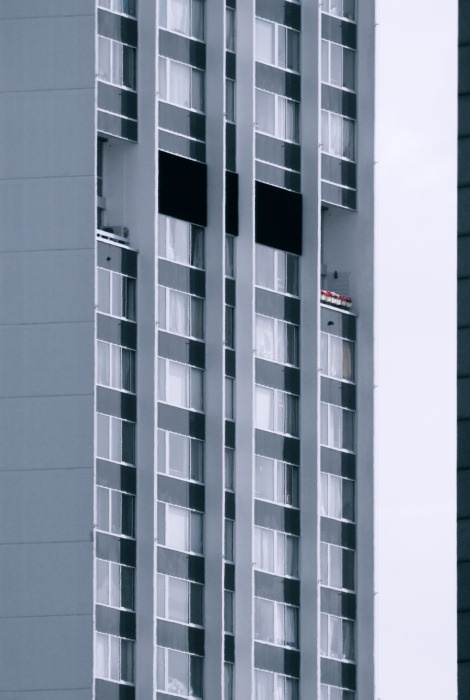
As it has no diaphragm, this might get a bit tricky if you are directly shooting against light. This picture is shot at 1/4000s, and it was quite close to have clipping on highlights:
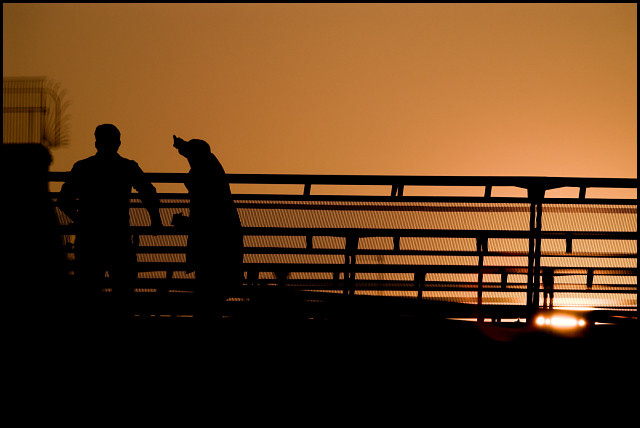
This is likely why it is provided with a neutral density front filter.
The central obstruction makes the bokeh to look like doughnuts (torus):
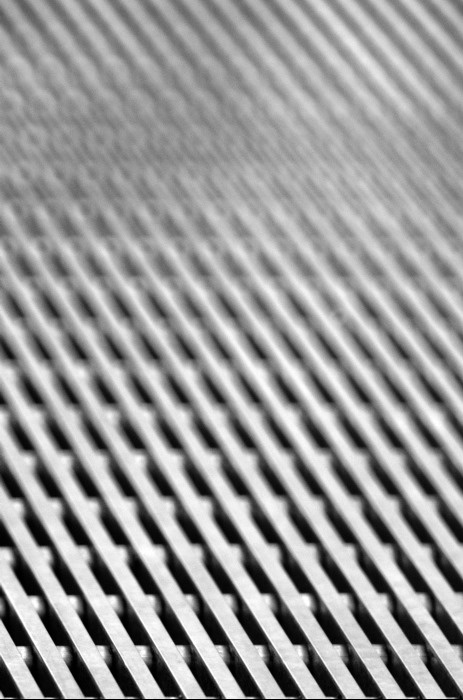
With a bit of practice, you can actually use this feature to enhance your shots:
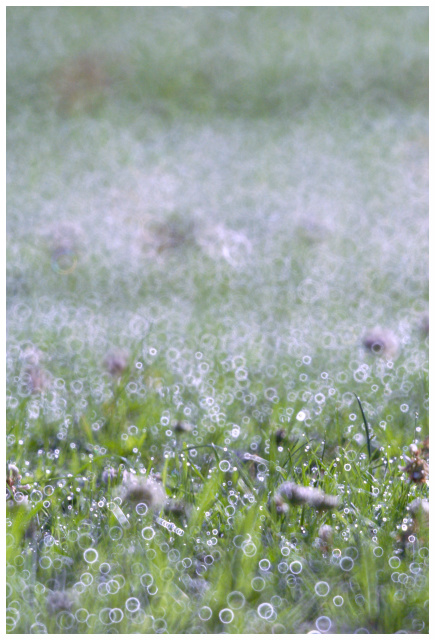
Back Next

 Calendar
Calendar




